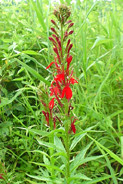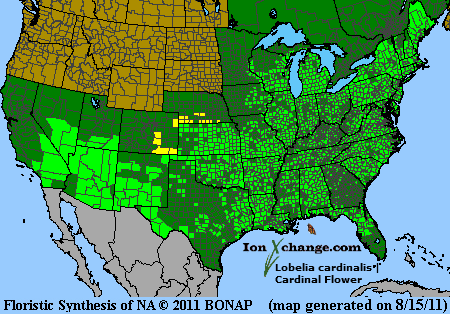 Loading... Please wait...
Loading... Please wait...- Home
- SEEDS
- SEED MIXES
- BUY PLANTS
- Info Request
-
Educational Videos
- Greenhouse Transplanting Demonstration
- Native Seed Cleaning demonstration at Ion Exchange Native Seed and Plant Nursery
- Attracting Butterflies
- Bidens - Bidens cernua Harvest Video
- Big Blue Stem Harvest
- Butterfly Milkweed Video
- Button Blazingstar - Liatris aspera Video
- Buttonbush - Cephalanthus occidentalis Video
- Canada Anemone - Anemone canadensis Harvest Video
- Cardinal Flower - Lobelia cardinalis Video
- Control Burn - Wildflower Field
- Cream Gentian - Gentiana flavida
- Culver's Root - Veronicastrum virginicum Video
- Cup Plant - Silphium perfoliatum Video
- Dormant Seeding | Planting
- Earthyman's Favorite Wildflowers Video
- Eco-Friendly Golf Course Seed Mix
- Floating Islands
- Fringed Loosestrife - Lysimachia ciliata Video
- Giant Yellow Hyssop - Agastache nepetoides Video
- Indiangrass - Sorghastrum nutans Video
- Iowa Prairie Partner Program
- Leadplant - Amorpha canescens (Potted) Video
- Meadow Blazingstar - Liatris ligulistylis
- Midland Shooting Stars - Dodecatheon meadii Video
- Native Plant Nursery Field Irrigation Experiment
- Nodding Onion - Allium cernuum Video
- Ohio spiderwort - Tradescantia ohiensis Video
- Old Man's Beard - Clematis virginiana blooms Video
- Oxeye Sunflower - Heliopsis helianthoides Video
- Prairie Spiderwort - Tradescantia bracteata
- Purple Coneflower - Echinacea purpurea Video
- Rain Garden or Water Garden Video
- Rattlesnake Master - Eryngium yuccifolium Video
- Riverbank Stabilization - Wetland Plants
- Rose Mallow - Hibiscus militaris Video
- Rosinweed - Silphium integrifolium Video
- Royal Catchfly - Silene regia
- Showy Tick Trefoil - Desmodium canadense Video
- Sneezeweed - Helenium autumnale Video
- Swamp Betony - Pedicularis lanceolata Video
- Swamp Milkweed - Asclepias incarnata Video
- Sweet Blackeyed Susan - Rudbeckia subtomentosa Video
- Tall Coreopsis - Coreopsis tripteris Video
- Urban Butterfly Garden
- Wild Bergamot - Monarda fistulosa Video
- Wild Geranium - Geranium maculatum Harvest
- Wild Goldenglow - Rudbeckia lanciniata Video
- Wild Petunia - Ruellia humilis Harvest Video
- Woodland Knotweed - Polygonum virginianum Video
- Yellow Coneflower - Ratibida pinnata Video
- Blog
- Resources
- Policies
Contact Us
Phone:
563-419-0837
or 563-535-7231
Email:
hbright@ionXchange.com
Browse Products
Add to Wish List
You Recently Viewed...
Our Newsletter
Product Description
Lobelia named after the 16th century herbalist, Matthias von Lobel
| Sun Exposure | Prairie, Savanna |
| Soil Moisture | Wet, Wet Mesic |
| Bloom Time |
Summer, Fall July, August, September |
| Bloom Color | Red |
| Max Height | 5 feet |
| Wetland Code | OBL |
| Germ Code | C(60), D |
| Seeds Per Packet | 750 |
| Seeds Per Ounce | 400,000 |
Locally common in wet sites; prairie depressions, borders of prairie streams, moist thickets and moist open woodlands. Large leaves for the size of the plant (up to 7 inches). Brilliant red flowers bloom from mid-June to September. Grows 2 to 3 feet tall.
Native Americans made a tea from the roots to ease the pain of stomachaches and to treat typhoid and worms. The root tea was also an ingredient in "love potions". A tea made from the leaves of L. cardinalis was used for colds, croup, nosebleeds, fevers, headaches and rheumatism. The leaf tea was once thought to be a nerve tonic as well. It is a potentially toxic plant.
Edible Uses: Unknown
Medicinal Uses: Emetic, expectorant and nervine.
The root is analgesic, anthelmintic, antispasmodic and stomachic. A tea made from the roots has been used in the treatment of epilepsy, syphilis, typhoid, stomach aches, cramps, worms etc. A poultice of the roots has been applied to sores that are hard to heal. The leaves are analgesic and febrifuge. A tea made from the leaves is used in the treatment of croup, nosebleeds, colds, fevers, headaches etc. A poultice of the leaves has been applied to the head to relieve the pain of headaches].
This species is considered to have similar medicinal activity to L. inflata, but in a milder form. It was seldom if ever used. The plant is used to make a homeopathic remedy. The report does not say which part of the plant is used, nor what it treats.
Herbal Uses: Unknown
Product Videos
-
 Cardinal Flowe...Earthyman views Cardinal Flower (Lobelia cardinalis) in bloom ...
Cardinal Flowe...Earthyman views Cardinal Flower (Lobelia cardinalis) in bloom ...














